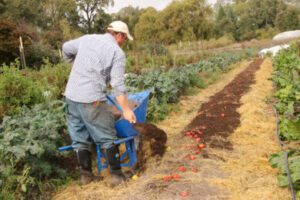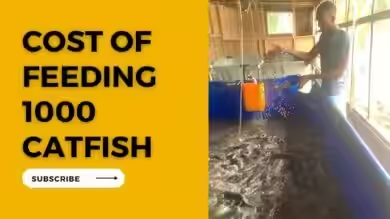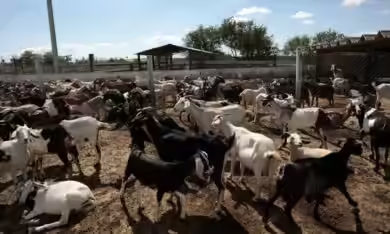Last updated on April 3, 2025
What Is The Most Important Thing In Farming? Farming isn’t just about plowing fields and harvesting crops—it’s a mix of science, nature, economics, and a whole lot of heart. So, what’s the single most important thing in farming? It boils down to sustainability. Without sustainable practices, farming can’t thrive long-term, and we all know that farming isn’t just about the here and now—it’s about the future, too.
But what does sustainability really mean in farming? And how can it actually change the way we farm across different regions? Let’s dive in.
Why Sustainability Is Non-Negotiable
At its core, sustainability in farming is about maintaining a balance between the environment, society, and the economy. It’s about producing food that meets today’s needs without compromising future generations’ ability to do the same. The big questions are: How do we ensure we’re feeding people sustainably? And how can we do that without overburdening our planet? Let’s explore this.
Real-World Examples of Sustainable Farming at Work
Regenerative Agriculture: Farmers are increasingly embracing regenerative practices to improve soil health and boost long-term crop production. For example, in the United States, the Rodale Institute has been leading the charge in regenerative agriculture, helping farmers transition from traditional farming methods to ones that restore soil rather than deplete it. Through crop rotation, cover crops, and reducing tillage, these practices can store carbon in the soil and increase crop yields over time.
Vertical Farming: Meanwhile, urban areas are getting creative. Take Aerofarms in New Jersey, for instance. They’ve created vertical farming systems that allow crops to grow in stacked layers, dramatically reducing the space needed for farming. This not only saves land but also uses 95% less water than traditional farming methods. Imagine harvesting fresh, nutritious greens in the middle of a bustling city! That’s the future of farming in a rapidly urbanizing world.
Regional Differences: Challenges and Solutions Across the Globe
Sustainability isn’t a one-size-fits-all solution. What works in the Midwest U.S. might not fly in Sub-Saharan Africa, where water access and market volatility create unique hurdles. Let’s look at how different regions are facing farming challenges and finding creative solutions.
In the U.S. Midwest: Overcoming Monoculture and Climate Challenges
In regions like the Midwest, where monoculture farming has long dominated, the main challenge is restoring biodiversity. Monoculture—growing a single crop year after year—leaves the soil drained of nutrients, which can lead to pests and diseases. To combat this, farmers are adopting crop rotation and agroforestry.
One farm in Iowa, Green Valley Farms, shifted from corn and soybean monoculture to a diversified system that includes oats, alfalfa, and clover. Not only has this reduced the need for chemical fertilizers and pesticides, but it has also restored vital soil nutrients, reducing runoff into nearby waterways.
In Sub-Saharan Africa: Innovating with Limited Resources
In Sub-Saharan Africa, farmers face extreme weather patterns and limited access to irrigation. Here, climate-smart agriculture is key. One remarkable example comes from the World Agroforestry Centre in Kenya, which trains farmers in agroforestry—growing trees alongside crops to protect them from soil erosion, improve moisture retention, and increase yields. Despite the harsh conditions, these farmers are seeing improvements in both crop resilience and income.
In Southeast Asia: Tackling Water Scarcity with Smart Irrigation
In Southeast Asia, where water scarcity is becoming an increasing issue, many farmers are adopting smart irrigation systems. For example, the International Rice Research Institute (IRRI) has introduced low-cost, solar-powered irrigation systems that can be controlled with mobile phones. Farmers in Vietnam are already using this technology to conserve water while boosting rice yields—an example of how technology and sustainability can work hand-in-hand.
The Role of Smart Farming Technologies
As the world moves towards more sustainable practices, technology plays an increasingly critical role. Smart farming technologies such as automated irrigation systems, drone-assisted crop monitoring, and sensor-equipped tractors are helping farmers optimize their use of resources.
In Australia, farmers in the Queensland region have adopted drone technology to monitor cattle herds, track plant health, and even distribute fertilizer. This level of precision allows them to reduce costs while maintaining healthy ecosystems.
Pest Control: A Shift Toward Sustainability
Pest control is another area where sustainability shines. Traditional chemical pesticides are harmful not just to pests but also to soil health and surrounding ecosystems. More and more, farmers are turning to Integrated Pest Management (IPM), a method that combines biological control, crop rotation, and the use of resistant crop varieties.
One standout example is The Rodale Institute’s use of beneficial insects like ladybugs to control aphid populations. This eco-friendly pest control method drastically reduces the need for harmful chemicals and promotes biodiversity.
Financial Impacts: How Sustainability Pays Off
Sustainability isn’t just good for the planet—it’s good for the bottom line too.
- Lower Costs: Practices like no-till farming or using organic fertilizers can lower long-term costs. Farmers in the UK who adopted no-till farming reported a significant reduction in fuel costs and a decrease in soil erosion. This means less need for expensive inputs like fertilizers and pesticides.
- Market Demand: Consumer demand for sustainably produced food is growing. Studies show that consumers are willing to pay more for food labeled as organic or sustainably produced. This trend is particularly noticeable in the U.S. and Europe, where sales of organic produce grew by over 10% in 2024 alone (Organic Trade Association).
Overcoming Barriers: What’s Holding Farmers Back?
So, if sustainability is so important, why aren’t all farmers switching to these practices right away?
- Costs and Accessibility: While the benefits are clear, transitioning to sustainable practices can require an upfront investment. For small-scale farmers, especially in developing regions, access to funds and technology can be a significant barrier.
- Knowledge Gaps: In many areas, farmers lack the training or knowledge to implement advanced techniques like agroforestry or precision irrigation. This is where agricultural education and extension services come into play, offering vital training and support.
The Future of Farming: What’s Next?
As we look to the future, the need for sustainable farming will only grow. Emerging trends like climate-resilient crops, biological pest control, and data-driven farming will shape the next generation of agriculture. With the right technologies and policies, we can turn the tide on environmental degradation and ensure food security for generations to come.
Final Thoughts: Sustainable Farming is the Future
The most important thing in farming today is sustainability. From the soil under our feet to the food on our plates, sustainability ties everything together. It’s not just a buzzword—it’s a movement that’s gaining traction worldwide. Farmers, regardless of where they are, are finding creative solutions to challenges, whether it’s water scarcity, climate change, or economic volatility. And as consumers, we can support them by making informed choices and advocating for policies that prioritize long-term agricultural health. What do you think about the future of farming? How can we as consumers and advocates help promote more sustainable practices in agriculture? I’d love to hear your thoughts—let’s continue the conversation!


